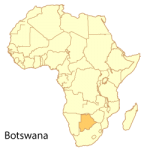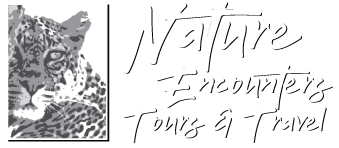Botswana
Highlights
- Game parks such as Chobe, Savuti and Moremi
- The Okavango Delta
- The desert experience of the pans
- San Rock Art
- Cultural experiences

Botswana is a unique destination offering majestic scenery together with a profusion of wildlife, boasting one of the lowest population densities in the world and adhering to an exclusive tourism policy, Botswana ‘s wilderness attractions are largely unspoiled and un-crowded.
The greatest attraction of Botswana is its prolific wildlife and bird-life. With over 600 species of birds, including many unique and rare species can be found throughout Botswana. The country boasts the largest populations of elephant in the world and is home to over 65 000 migrating elephants.
The jewel of Botswana is without doubt the Okavango Delta. Southern Africa’s third largest watercourse (after the Zambezi and the Orange Rivers) is the Okavango River, which rises in the Angolan uplands and flows into Botswana. Towards the end of its journey it spreads itself out into a huge inland delta. The wetland it creates is one of the natural wonders of Africa This huge inland delta consists of a labyrinth of lazy lagoons, palm filled islands, lakes and hidden channels that covers more than 170 000 square kilometers. This inland delta acts as a magnet for wildlife, which depend on its permanent waterways. The main form of transport in the Okavango is the Makoro, a traditional dugout canoe, manned by a poler, who guides and propels the vessel through small channels and waterways. Most camps and lodges offer relaxing makoro safaris, which are ideal for gliding through the quiet water lily filled pools and experiencing the abundant and rich birdlife found in the Okavango.
There are numerous camps either within the Moremi Reserve, or in bordering concessions. Within this wilderness of contrasts, many of the areas in the delta are dry and sustain permanent populations of game. Four-wheel drive vehicles are used to take visitors to see large herds of antelope, red Lechwe, elephants and buffalo’s. In their footsteps will be the ubiquitous predators – lion, leopard and cheetah.
Other areas of interest in Botswana are of course the Chobe National Park, situated in the far North of Botswana. This area is famous for its large herds of elephant, which in the dry season congregate in the hundreds. The seasonal availability of water across the hot, flat grassland terrain means that Chobe sees dramatic Zebra migrations each year. Elephant and Buffalo, their numbers rise significantly during the drier seasons, are often seen quenching their thirst along the Chobe Rivers’ edge. The Chobe also comprises the well-known Savuti in the South Western corner of the Chobe National Park. The Savuti promises sightings of wild dog, leopard cheetah as well as large concentrations of lion intent on following the annual Zebra migration.
The complexity of the saltpans is found in Botswana’s eastern regions known as the Makgadikgadi. The pans are a striking physical feature and some are the largest of their kind in the world, covering over 12000 square kilometers. The pans are huge flat expanses of hot, sun-blasted terrain, fringed by vegetated islands and peninsulas. This complex of pans and grassland is all that remains of the southern African super-lake that once covered over 60 000 square kilometers and reached a depth of 50 meters in some places. For the majority of the year, the pans are dry and desolate tracts of cracked, hard white saline sand. When the summer rains come in late November, the salty wilderness undergoes a radical transformation where you will see hundreds and thousands of water birds drawn to the shallow pools covering the crusty surface. The convergence of a myriad flamingos and pelicans makes the pans appear a pink blur, while vast migrating animal herds congregate and travel through this mineral rich area. While the Makgadikgadi are made up of numerous pans, the three major ones are the Ntwetwe Pan south of Gweta (the largest pan in this ancient lake bed system) Sowa Pan is situated south west of Nata and Nxai Pan north of the main Gweta/ Maun road. Specialized desert adapted wildlife is seen in this area including the brown hyena, suricats and gemsbok. When this was a lake system, early man habituated the area and today there are many interesting areas where early man tools can be found.
Botswana not only preserves its local traditions, but has carefully protected its heritage of ancient culture, from the Stone Age artifacts of the salt pan areas up to the wealth of San Rock art found across the country as show cased at the Tsodilo Hills. Botswana is the best place if you are looking to relax and enjoy the nature’s unique untamed African adventure experiences.
















